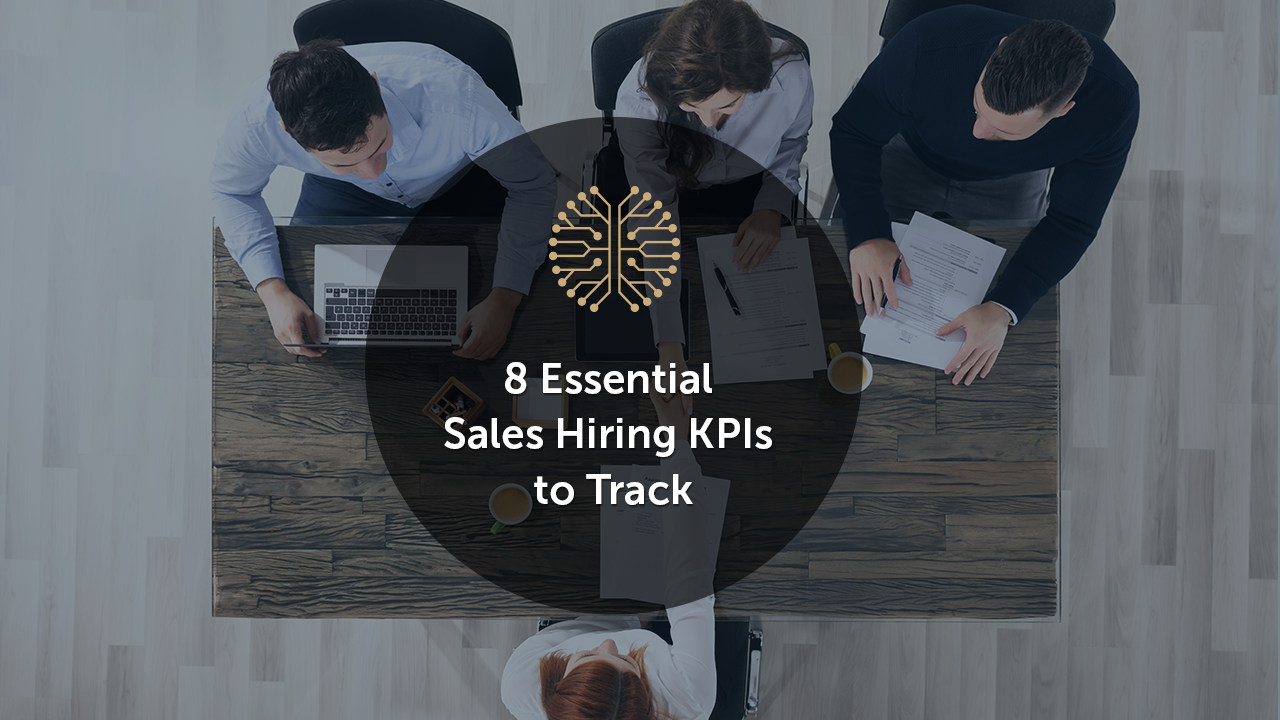
As a sales leader, nothing derails your ability to hit your number more than open headcount and bad hires. When you can’t fill open roles quickly with a quality hire, key accounts get neglected, customers get annoyed, and loss rates climb. Furthermore, sales managers’ time and energy get consumed trying to save underperformers, keeping them from strategizing and coaching on pivotal deals. Practical, timely sales hiring is crucial to your success.
If you are not tracking sales hiring KPIs in the same manner as other sales funnel metrics, then you are putting yourself at a significant disadvantage. Thankfully, getting started is not difficult. Below are some of the more essential sales hiring KPIs you should measure.
- Cost per Hire
Cost per hire is a very important KPI for budgeting. Over a year, how much do you spend on all of your recruiting and onboarding activities? Be sure to include hard costs, such as costs to post positions on job boards, external recruiter fees, T&E expenses to meet candidates face-to-face, signing and relocation bonuses, and costs associated with new hire onboarding events and training. Also include soft costs, such as internal recruiter and HR administration time, sales manager time for interviewing, and your time for “closing” strategic hires. Take the sum of all these costs, divide by the total number of hires, and you have your Cost per Hire.
- Time to Hire
Time to hire is a very important KPI for planning. Too often, leaders underestimate the time it takes to fill an open position, from when the job requisition is drafted to the first day the new hire starts the job. Top candidates hate slow-moving hiring processes, yet processes are loaded with many steps that can slow things down. This includes attracting applicants, scheduling interviews; deciding who to make an offer to; setting, negotiating, and approving compensation packages; conducting pre-employment screening and background checks; and agreeing on the actual start date. If the hiring process is new to you, use a few recent hires as case studies to work back from their start date to the day the job req was approved, and even before that (say budget planning) if appropriate.
- Applicants and New Hires by Source
Applicants by Source measure volume, and New Hires by Source gives you a better indication of quality. This is important to help you identify the best sources of applicants. Job boards and recruiters can get expensive; if you use them, use them wisely. The better you know your best and most economical sources, the more effective and efficient your overall hiring process becomes.
- Application to Interview Ratio
The application to interview ratio KPI gives the proportion of applicants that make it to a first interview. This KPI helps to identify the effectiveness of your screening process. If too many unqualified candidates get interviewed, it wastes time and resources. If too few get interviews, then perhaps you have a quality problem, and you need a screening tool to help triage applicants more effectively.
- Interview to Offer
The interview to offer KPI is the percentage of offers you extend to people you interview. If this number is too low, it could indicate a screening problem – you are interviewing too many unqualified candidates, which wastes your time and resources.
- Offer to Acceptance
The offer to acceptance KPI is the percentage of people that have been offered a job and accept the position. Losing candidates at this stage is painful because you’ve invested a lot of time and energy into recruiting them. Low offer-to-acceptance rates might indicate that your offers are not competitive, and you need to re-assess the total compensation market for the jobs you are trying to fill. It could also mean that candidates find a competitor more compelling for other reasons, such as product superiority, better territories, or stronger management. Knowing this KPI and tracking it very carefully will deepen your understanding of the root cause as to why your offers are being refused.
- Hiring Manager Satisfaction
The hiring manager satisfaction KPI is similar to your recruiting team’s Net Promoter Score or Customer Satisfaction Score. You should gather feedback from hiring managers on their satisfaction with candidates passed to them to interview. This can be a simple survey that each completes following an interview to provide additional perspective when necessary. Feeding this information to close the loop with recruiters helps them adjust their screening criteria and applicant sources to improve continuously.
- New Hire Success/Failure/Retention Rate
New hire success/failure/retention rate is the most important KPI to track for recruitment planning, budgeting, strategy, and execution. Knowing this information can help you hone in on your best sources of new candidates, refine your screening criteria and hiring process, and inform your onboarding activities. Knowing how many new hires are succeeding, failing, or leaving is important and why is important.
While other sales are hiring KPIs you can track, these eight are the most critical. This data and insights enable you to manage your sales hiring like a pipeline, just as you do for other aspects of your business. The result is a great success and more predictable outcomes.